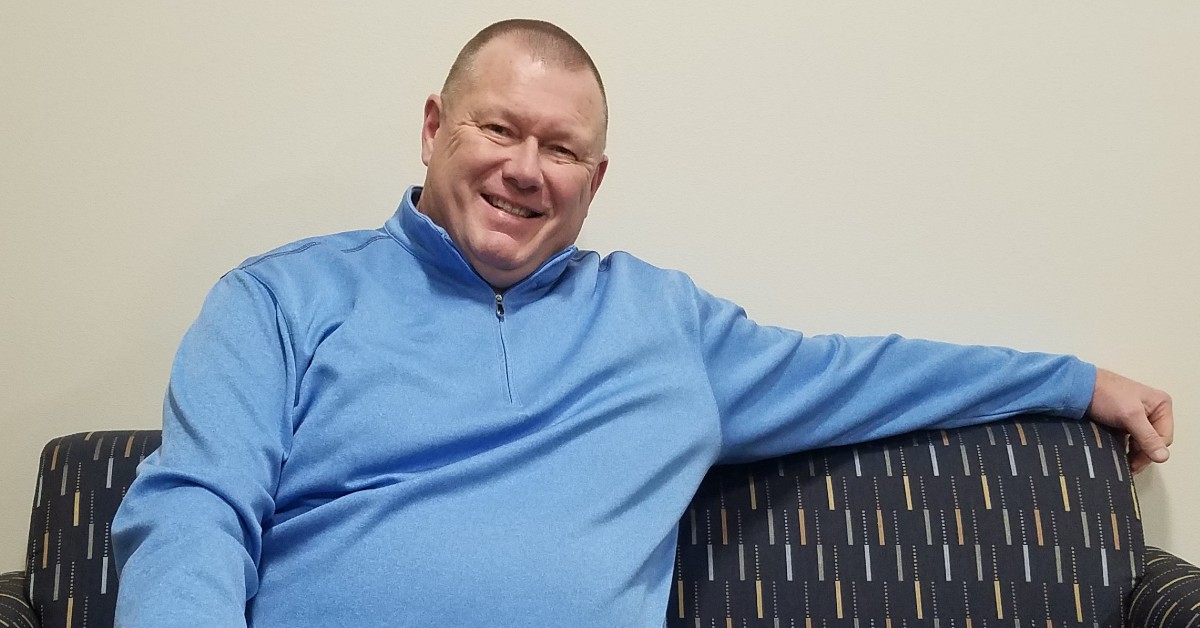
Dan Van Straten doesn’t have a good excuse for why it took him so long to have his left hip replaced.
Oh, sure, he’s a busy guy. He works for a blood bank, sits on a school board and is the public address announcer for high school and college sports and community events. Then there’s family time.
How long did he go with a bad hip?
“Probably five years. I just kept thinking it would get better, or kept stretching it out, or didn’t want to take the time. Every excuse you could think of,” says Van Straten, who lives in De Pere.
But by October 2020, enough was enough.
“For me, it was a loss of mobility,” Van Straten says. “Couldn’t even tie my shoe. Had a hard time bending down. Had a hard time laying on my left side. A lot of stiffness. It was even spreading into my back a little bit. I’d get a lot of popping. It was bone on bone. Really, the quality of life from day to day was a struggle.”
That’s when he turned to Dr. Michael Schnaubelt, an orthopedic surgeon with Orthopedics & Sports Medicine BayCare Clinic in Green Bay.
“I was really impressed right away,” Van Straten says. “He said, ‘Well, you can live with this or you can improve your quality of life and we can replace that joint. Over time, it’s just going to be more and more uncomfortable for you. Some people choose to live with it. You’re still a relatively young guy, I would highly recommend replacing it.’”
Van Straten, who is in his 50s, chose anterior hip replacement surgery.
In that procedure, the surgeon makes an incision in the front, or anterior, part of the hip. This approach goes through a natural muscle interval and allows access to the hip joint through a much smaller incision and without cutting any muscle tissue. Most other surgical approaches for hip replacement require cutting through muscle tissue to access the joint. This causes greater pain, a longer recovery and a potentially high risk of dislocation.
“Hearing the difference between the two and knowing that the anterior was a little quicker recovery time and hearing about the posterior and having to go through more muscle, I just felt like it was a better procedure for me,” Van Straten says of choosing the anterior approach.
Schnaubelt replaced Van Straten’s left hip shortly before Thanksgiving 2020.
Gone immediately, Van Straten says, was the back pain that had accompanied his hip pain.
Physical therapy followed, with Van Straten progressing quickly from using a walker to using a cane to walking unassisted.
“By January, I was feeling fantastic,” he says.
“By February, the only discomfort I had was from the procedure area. From a pain standpoint, I really didn’t have any at all. Toward the end of February, I was moving around fairly comfortably, driving again. Things felt good.”
Van Straten was, and is, back in action.
“My quality of life has changed, my ability to move around. I can tie a shoe or work out, no pain. Pain free,” he says.
Van Straten has just one lingering regret. “Wish I would have done it a long time ago,” he says.
That shapes his advice for others with bad hips.
“Go in immediately,” Van Straten says. “I recommend Dr. Schnaubelt. You need to sit down and talk about it. I was pain free in such a short time after, that it’s well worth it to get it done.”